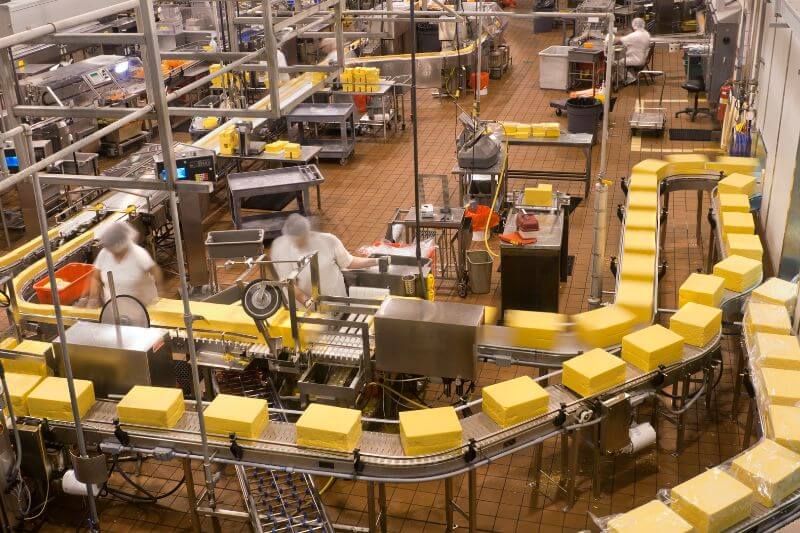History of labels, tags & packaging – Part 1: From local to global
Labels, tags and packaging (LTP) may not be the first thing that comes to mind when thinking about garment manufacturing. Still, these small details play a crucial role in branding, compliance and customer experience.
Over the last few decades, the LTP sector has undergone a quiet revolution, evolving from a localised, service-led industry to one dominated by sprawling global conglomerates.
Before globalisation took hold, LTP suppliers were often local businesses serving domestic manufacturers. But with the dramatic shift of garment production to low-cost economies in the 1990s, the entire supply chain had to adapt, and not everyone survived the change.
This post explores that transition, tracing the rise of global players and setting the scene for how independents like immago fit into today’s landscape.
The pre-GATT landscape: Local, loyal, and close to production
Before the 1990s, the LTP industry was deeply tied to local garment manufacturing. Suppliers were typically small to medium enterprises, often family-owned, with deep roots in their regional textile sectors. They worked closely with local manufacturers, building long-term relationships based on trust, service and responsiveness.
Proximity meant speed. It meant short lead times, face-to-face problem-solving, and quick design changes when needed. These suppliers understood their customers because they shared the same commercial and cultural environment. They understood the nuances of local markets and worked closely with brands to develop solutions that reflected each label’s identity. International presence wasn’t necessary because everything happened close to home.
LTP businesses were also diverse. Some specialised in woven labels or swing tags, others in care labels or packaging. Many offered not just products, but deep industry knowledge and creative input.
Their specialisation and customer intimacy made them an integral part of the garment production ecosystem.
But everything began to change in the 1990s.
 The global shift in garment production
The global shift in garment production
The 1990s marked a turning point. With the introduction of the World Trade Organisation (WTO) and trade liberalisation, garment manufacturing began shifting rapidly from consumption markets to production markets in the developing world.
As manufacturing moved offshore, many LTP suppliers found themselves cut off from their customer base. Orders disappeared. Longstanding relationships dissolved. Entire businesses were left behind.
In an attempt to adapt, some suppliers formed informal partnerships with offshore manufacturers. Others outsourced production to low-cost economies themselves or stopped manufacturing altogether and pivoted to become intermediaries between factories and brands. But many were unable to respond in time.
This disruption exposed a brutal truth: without international reach or flexible operations, survival was uncertain. The pace of globalisation created a clear divide between those who could adapt and those who could not.
The LTP industry fractures
As the new century began, the fallout became even clearer. Smaller LTP suppliers continued to close their doors, while mid-sized players either scaled up through acquisition or were swallowed by larger competitors. The industry began to polarise.
Two clear camps emerged:
- Conglomerates that grew through aggressive acquisition and investment in global infrastructure.
- Independents that carved out a niche by offering higher-touch service, product innovation and responsiveness.
Those who stayed independent realised they couldn’t compete solely on price. Instead, they leaned into their strengths: quality, agility and relationships. This shift marked the beginning of a new chapter, where value was no longer measured solely by unit cost.
For many brands, particularly small to mid-sized ones, this shift meant a new kind of partnership was possible —one not dictated by volume discounts or minimum order quantities, but by flexibility and mutual understanding.
 The rise of the global giants
The rise of the global giants
By the mid-2000s, industry consolidation had continued to grow. Large LTP companies began to merge, creating a handful of dominant global players. Chief among them was Avery Dennison, whose acquisition of Paxar in 2007 made it the world’s largest apparel labelling company.
The acquisition, valued at approximately $1.34 billion, was seen as a strategic step for Avery Dennison to expand its reach into new geographies like Southern Asia and Europe, where Paxar already had a strong presence.
This dominance expanded in 2013 when Avery itself was acquired by CCL Industries, a Canadian multinational with operations across multiple sectors. CCL went on to acquire Checkpoint Systems in 2016, further solidifying its status as the largest label company globally, with over 26,000 employees and 213 production facilities across 42 countries.
Today, CCL’s presence in the apparel sector is unmatched. Their economies of scale, control over manufacturing, and global footprint make them a formidable force. However, as we’ll explore in the next post, size doesn’t always equate to better service, and for smaller brands, it can come with real trade-offs.
So, what does it all mean?
The LTP industry has undergone significant changes since the days of local, hands-on suppliers. Globalisation brought efficiencies and scale, but also disconnection and complexity. Today, brands face a choice between the scale of mega-suppliers and the agility of independents.
Check back for part two of this series, where we’ll dive into the rise of the mega-suppliers and what it really means to work with a global conglomerate like CCL, and where their model may fall short for small to mid-size apparel brands.
Until then, if you’ve any questions about labels, tags and packaging, please don’t hesitate to reach out to us. There’s a reason immago survived the globalisation of the nineties, fought off the big boys, and are still going strong!



 The global shift in garment production
The global shift in garment production The rise of the global giants
The rise of the global giants